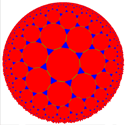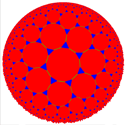Two is good, four is better
Over the last years, theorists have made efforts to generalize quantum field theories using the idea of supersymmetry—a theory that says every fermion has a superpartner boson, and vice versa. A leading motivation behind these studies is to use supersymmetry to extract lessons of broader significance that may apply to realistic quantum field theories, even though supersymmetry may not be an actual symmetry of nature. However, even with the simplifying powers of supersymmetry in place, making exact statements about quantum field theories in the physically interesting case of four spacetime dimensions has proven notoriously difficult.
Now, in a paper published in Physical Review Letters, Abhijit Gadde and collaborators from the Yang Institute for Theoretical Physics at Stony Brook University, US, show that a certain partition function, of a class of supersymmetric field theories in four dimensions, is exactly equal to that of a nonsupersymmetric field theory in two spacetime dimensions. Since field theories in two dimensions are much simpler than their four-dimensional counterparts—many of them are in fact exactly solvable—this map offers a potentially potent computational tool. Also, from a purely mathematical point of view, Gadde et al.’s findings may shed some light on the geometric and topological structures that underlie these field theories in different spacetime dimensions. – Abhishek Agarwal





